Review:The baptism of the Holy Spirit (Aramaic roots VI)
Jesus said, "Those who know all, but are lacking in themselves, are utterly lacking." (Thomas 67) According to Mr. Sasagu Arai, author of the Japanese version of The Gospel of Thomas, this passage is reminiscent of the words, "What good will it be for a man if he gains the whole world, yet forfeits his soul?" written in the Gospels of Mark (8:36), Luke (9:25) and Matthew (16:26). "All" may refer to the universe. "The universe will pass away (Thomas 11/111)." Therefore, if you knew all. but were lacking in your true self, you would be utterly lacking. Then you dwell in poverty, and you are poverty (Thomas 3).
Apparently, Thomas verse 67 seems to be the inside-out of Thomas verse 5. Jesus said, "Recognize what is in your sight, and that which is hidden from you will become plain to you. For there is nothing hidden which will not become manifest." (Thomas 5) If you do not wake up to your true self, you can not find the Revelation of God in what is in front of you.
−−−−−−−−−−−−−−
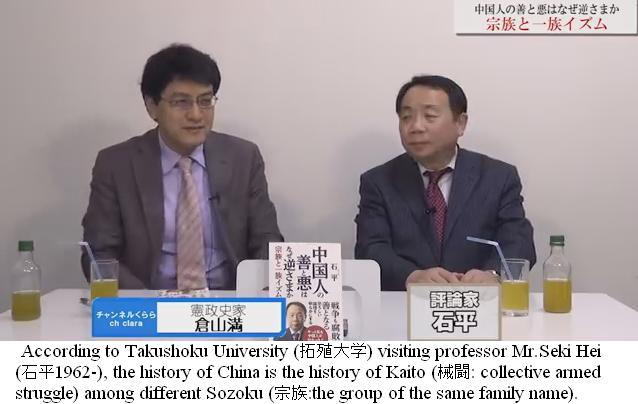
Although the struggle between nomads and indigenous farmers over Canaan, the Promised Land of Milk and Honey flowing between the Mediterranean Sea and the Jordan River, had come to an end when the Western bank of the Jordan was vanquished by Moses' successor Joshua, the alliance of the twelve (or fourteen) tribes, which were never monoliths, had to continue to deal with internal conflicts and friction with indigenous farmers, as well as the invasion of the maritime people, such as the Phoenicians and Philistines. However, with the advent of Saul, a Benjamin tribe, and David, a Judah, and his son Solomon, Israel turned from a tribal coalition into a unified kingdom, albeit for a short time. This experience seems not only to have been immediately brought to the Far East country of 'Toyoashihara no mizuho no kuni (豊葦原の瑞穂の国:the country of rich harvests of fresh rice, that is, Japan)' by the Aramaic-speaking nomads but also played a role even in the birth of the Great Qin Empire.
According to Takushoku University (拓殖大学) visiting professor and commentator Mr. Shi Ping (石平Sekihei1962-) who came from Chengdu, Sichuan Province and obtained permanent residency in Japan, the history of China is the history of Xiedou (械闘Kaito: collective armed struggle) among different Zongzu (宗族Sozoku: the group of the same family name), if there is a leader, who can control the fighting and corruption, let Zongzu (宗族), each of which has the function of economic community with mutual aid capability, manage themselves, the national economy grows naturally and the society develops smoothly.
Indeed, this truth seems to be able to apply not only to the twelve tribes' alliance of ancient Israel and ancient Japan, but also to the entire world. However, a unified nation needs a philosophy to bundle many Zongzu (宗族). Thus in Israel Moses built Judaism in order to reorganize the 12 nomadic tribes into a union of independent tribes and to establish the unity of religion and politics based on the covenant of the single founder Abraham and God. In Japan, Prince Shotoku (聖徳太子), Emperor Tenchi (天智天皇), Emperor Tenmu (天武天皇) and others established the imperial system of single line from time immemorial (万世一系の天皇制) though congregating Shinto, Judaism, primitive Christianity, Confucianism, Buddhism, and Taoism in order to unify Chinese, Korean, Mongolian, and marine immigrants and indigenous Jomon people who believed in eight million gods (八百万の神Yaoyorozu no kami).
−−−−−−−−−−−−−−
The Isshi Incident and the Taika Reform
On July 10, 645 AD, June 12 of the 4th year of Emperor Kogyoku (皇極天皇), a ceremony of tribute from Sankan (三韓進貢), that is, Silla (新羅), Baekje (百済) and Goguryeo (高句麗), was held in Daigokuden (大極殿: name of palace) of Asukaitabukinomiya (飛鳥板蓋宮). When the Emperor Kogyoku came out with her eldest son, Prince Furuhitonooenomiko (古人大兄皇子), the de facto heir to the throne, Prince Nakanooenomiko (中大兄皇子), the second-tier successor to the throne, and Nakatominokamatari (中臣鎌足), who was in charge of the ritual of the Imperial Court, rushed in and slaughtered Oomi (大臣=Prime minister) Soga Iruka (蘇我入鹿). It is so-called "Isshi Incident(乙巳の変)." With this, so-called "Taika Reform (大化の改新)," a series of reforms to transform the Yamato Imperial Court into a centralized state with the Emperor at the top from the tribal federation, were started.
At this time, not only the introduction of Ritsuryo System (律令制度: the Chinese ordinance system) and the construction of permanent royal capitals, but also Manyoshu (万葉集), the anthology of Japanese poetry, was compiled in addition to the Kojiki (古事記: the records of ancient matters and mythology) and Nihon Shoki (日本書紀: the oldest chronicles of Japan) to cultivate the Yamato ethics. These seem to have been a succession of the effort of Prince Shotoku (聖徳太子), who had ordered Hata Kawakatsu (秦河勝) to let eight million patron gods of clans from all over Japan be devotion to the glorious virtues (御稜威) of the imperial system of single line from time immemorial (万世一系の天皇制).
Two versions of the sun goddess's grandson's descent to earth
According to the Kojiki (古事記) and Nihon Shoki (日本書紀), the imperial family of Japan is considered to be a direct line of Ninigi no Mikoto (瓊瓊杵尊), who descended to the peak of Takachiho (高千穂の峰) in Tsukushi (筑紫) of Kitakyushu (北九州) on the order of his grandmother Amaterasu Omikami (天照大神). Amaterasu Omikami, after being handed over Izumo no Kuni (出雲国: State of Izumo) from Okuninushi no Mikoto (大国主命), the son-in-law (or the 6th grandson) of her younger brother Susano no Mikoto (須佐之男命), who had built the state after being exiled from Takamagahara, ordered Ninigi no Mikoto to take care of the state of Izumo.
The great-grandson of Ninigi no Mikoto, Kamu-yamato-iware-hiko no Mikoto (神日本磐余彦尊), that is, Emperor Jimmu decided to move his Imperial Court from Izumo, which seems to have originally located around Tsukushi in Kitakyushu, to Yamato, which was located in the center of the Japanese archipelago. However, in Yamato there was already a country built by another grandson of Amaterasu Omikami called Amaterukuniteruhiko Amenohoakarikushitama Nigihayahi no Mikoto (天照国照彦天火明櫛玉饒速日尊). Both sides acknowledged that they were in the same Tenson tribe after several fierce battles and Nigihayahi no Mikoto swore allegiance to Kamu-yamato-iware-hiko no Mikoto. Then Kamu-yamato-iware-hiko no Mikoto (神日本磐余彦尊) took the throne as Emperor Jimmu (神武天皇) at Unebino Kashiharanomiya (畝傍橿原宮: Present Nara Prefecture) on the 1st of January in the years of kanototori (辛酉), the 11th of February in 660 BC and founded the Kingdom of Japan.
The detail of Nigihayahi no Mikoto's descent from the Heaven has not been reported in Kojiki and Nihonshoki, but according to Sendai Kujihongi (先代旧事本紀: Another ancient Japanese History Book), he was far more attendants than Ninigi no Mikoto was.
Emperor Jimmu's Korean roots and Izumo Taisha Shrine
By the way, Nihon Shoki describes Emperor Jimmu's elder brother Inaino Mikoto (稲飯命) as Silla (新羅) Kings' ancestor. In other words, it implies that a Kitakyushu based Korean Peninsula-linked clan merged the Yamato dynasty founded by Tenson tribe Nigihayahi no Mikoto (天孫饒速日尊) and built the Jimmu dynasty (神武王朝).
Incidentally, the two emperors, who is thought as the founder of Yamato dynasty, appear in Kojiki and Nihonshoki. They are the first Emperor Jimmu (神武天皇) and the tenth Emperor Sujin (崇神天皇). The name of Emperor Jimmu in the Kojiki is 'Kamuyamato Iwarehikonomikoto (神日本磐余彦尊: God of Japan named Iwarehiko),' but in the Nihon Shoki it is described as 'Hatsukunishirasu Sumeramikoto (始馭天下之天皇: Emperor who first ruled Japan).' And regarding the Emperor Sujin (崇神天皇), the Kojiki also states "Hatsukuni Shirashi Mimakino Smelamikoto(初国知らしし御真木天皇)" and the Nihon Shoki states "Hatsukuni Shirasu Smelamikoto (御肇国天皇)," both of which are supposed to mean the first Emperors to rule the nation.
Today, from the second Emperor Suizei (綏靖) to the ninth Emperor Kaika (開化) in the history of ancient Japan, is called "Kesshi hachidai(欠史八代: Eight generations without a description of the achievement)," because there are only genealogies and their personal histories are unclear. However, the genealogy from the 2nd to the 9th may reflect the genealogy of the Yamato Imperial Court before the Jinmu Tosei (神武東征: Emperor Jimmu's expedition to the east), which was founded by Nigihayahi no Mikoto (饒速日尊).
In addition, the 10th Emperor Sujin is said that he suppressed the epidemic by deifying Omononushi no Mikoto (大物主尊: the deity of Izumo Taisha Shrine), and issued the Imperial edict of "Bansei Ikkei (万世一系: an unbroken line of Emperors)."
The conquest of Sankan and Emperor Ojin
It is said that Empress Jingu (神功皇后) executed the the conquest of Sankan (ancient three Korean countries) despite she was already pregnant with her son after the death of Emperor Chuai (仲哀天皇) and produced the son named Hondawakenomikoto (譽田尊) who became the 15th Emperor Ojin (第十五代応神天皇). It is also questioned that he actually existed. Some ones say that he is the same person as the 16th Emperor Nintoku (第十六代仁徳天皇) and others say that he is a fictional emperor in order to add the 26th Emperor Keitai (第二十六代継体天皇) to the genealogy of the Emperor family.
However, in the Emperor Ojin (AD200-AD310)'s reign, scholars and skilled people frequently came in addition to the missions from Baekje and Silla. Especially, in 14th year of his reign, King of Yuzuki (弓月君), who is said to have been the third generation grandson of Qin Shi Huang (秦始皇帝BC259-BC210) and also the ancestor of Hata clan (秦氏), led the people of 120 prefectures and requested naturalization. However, they were stuck in Kala (加羅) after being disturbed by Silla (新羅). Therefore, it is said that Emperor Ojin sent troops to Korean Peninsula twice to realize the arrival of the Yuzuki people.
This dynasty starting from Emperor Ojin was called the "Kawachi dynasty (河内王朝)" because many palaces and mausoleums were built in Kawachi (Present eastern part of Osaka prefecture).
Mr. Koichirou Taneda (種田光一朗), former director of International foundation for the development of culture (国際文化振興財団), pointed out, "Looking at the genealogy of Japanese Emperor's family, the word 'kami (神)' is used in following three Emperors' name, the first Emperor Jinmu (神武天皇), the 10th Emperor Sujin (崇神天皇) and the 15th Emperor Ojin (応神天皇). It seems that when new blood enters the Emperor's family, the letter, 'Kami (神God) = Koin(光胤the seed of the Holy Spirit)' was used."
According to the Nihon Shoki, the 11th Emperor Suinin(垂仁天皇) when he sent back Prince Tsunugaarashito (都怒我阿羅斯等), the prince of Daikayakoku (大伽耶国), who had come from Korean Peninsula, asked him to name his country 'Mimaki (御間城)' useing part of his father Emperor Sujin (崇神天皇)'s posthumous name (諱) 'Mimakiiribikoinienosumeramikoto (御間城入彦五十瓊殖天皇).' This is said to be the origin of Mimana (任那), which later became Japan's prefecture on the Korean Peninsula. "Mimana (任那)" was another name for "Kinkankoku (金官国)," which is one of the small countries called "Kaya (伽耶)" in the southern part of the Korean Peninsula.
For this reason, Honorary professor Namio Egami (江上波夫1906-2002) of the University of Tokyo proposed the theory of northern equestrian people's conquest Japan who came through Mimana (任那) of the Korean Peninsula. And he said that Emperor Sujin (崇神天皇)'s posthumous name (諱)' is the proof that he came from Mimana (任那). In any case, Kojiki (古事記) and Nihonshoki (本書紀) repeatedly imply that the roots of the imperial family of Japan are on the Korean Peninsula.
Soga clan's rise and Takeuchi no Sukune's involvement
By the way, Mr. Biten Yasumoto(安本美典1934-), a psychologist and researcher of Japanese history, says that Emperor Ojin (応神天皇) seems to have been an illegitimate child between Empress Jingu (神功皇后) and Takeuchi no Sukune (武内宿禰), and if so, he said that he could explain well the subsequent rise of Katsuragi clan (葛城氏) and Soga clan (蘇我氏), the descendants of Takeuchi no Sukune.
Takeuchino Sukune (武内宿禰), great-grandson of the 8th Emperor Kogen (孝元天皇), served emperors for five consecutive generations such as Emperor Keiko(景行), Emperor Seimu (成務), Emperor Chuai (仲哀), Emperor Ojin (応神) and Emperor Nintoku (仁徳) as Ohomi (大臣: finance minister) with both ritual and military powers. Ishikawa Maro (石川麿), the grandson of Takeuchino Sukune, was given his surname Soga (蘇我) during the days of Emperor Yuryaku (雄略天皇) and was called Sogano Ishikawano Shukune (蘇我石川宿禰).
Soganomachi (蘇我満智), the second generation of the clan, participated in the politics of Yamato Imperial Court together with Monobenoikofutsu (物部伊莒弗), Hegurinotsuku (平群木菟) and Tsuburanoohomi (円大使主) when the 17th Emperor Ricchu (履中天皇) moved to Iwae (磐余) in the second year of his reign. However, because he had no heir, he adopted the grandson of Prince Rinsho (林聖太子), who had come from Baekje as a hostage. This is Soga Karako (蘇我韓子), who is said to have been active in the palace as the No. 1 official from the Korean Peninsula.
Emperor Keitai belongs to Hata clan
The 25th Emperor Buretsu (武烈天皇) died without appointing his successor, so the group members such as Omuraji (大連: Military Minister) Otomo Kanemura (大伴金村) and Monobe Arakabi (物部麁鹿火) and Oomi (大臣: Finance Minister) Kosenoohito (巨勢男人), etc. singled out the clan of Echizen (越前 Hokuriku region centered on present Fukui prefecture) Ohotonoou (男大迹王), who was said to be the grandchild of the fifth generation of Emperor Ojin (応神天皇), as the next emperor. After the twists and turns, Ohotonoou (男大迹王) was crowned as Emperor Keitai (継体天皇), the 26th Emperor, at Kusuba no Miya(樟葉宮) of Kawachi district (河内国) in 507. However, he did not enter Yamato for a long time, and after 19 years, he established the palace in Yamato for the first time at 526. For this reason, there are historians who see Emperor Keitai as the founder of a separate dynasty that did not have blood relationship with the former Yamato Imperial Court and call the dynasty the Echizen dynasty (越前王朝).
Emperor Keitai married Princess Tashirakanohimemiko (手白香皇女), the daughter of the twenty-fourth Emperor Ninken (仁賢天皇) and assume their son Prince Amekunioshiharakihironiwanomikoto (天国排開広庭尊= Emperor Kinmei) as the legitimate first son. He also married Menokohime (目子媛), the daughter of Owarinomurajikusaka (尾張連草香) and got another two sons called Magarinoohenomiko (勾大兄皇子= Emperor Ankan) and Hinokumanotakataminomiko (檜隈高田皇子= Emperor Senkan).
Kojiki and Nihonshoki do not mention the children of Emperor Ankan (安閑天皇), but according to the book Honchokouinjohunroku (本朝皇胤紹運録), which was compiled in the early days of Muromachi era (室町時代), Emperor Ankan had a prince called Toyohikomiko (豊彦王), and Toyohikomiko and Hata Kawakatsu (秦河勝) were the same person. If this is the case, then Emperor Keitai would also be a member of the Hata clan, who came from Korea and who is said to be a descendant of the first Emperor of Qin. Furthermore, it is possible that Qin Shi Huang (BC259-BC210) itself was a descendant of the tribe of Ephraim, Aramaic-speaking herders.
The birth certificate of Qin Shihuang
On the monument of 'Reconstruction of the Temple of Purity and Truth (重建清真寺記碑)' discovered in Kaifeng city (開封市) of eastern Henan province (河南省) of China, it is written that the Jews first arrived in the city in 231 BC, and formed a Jewish community.
At that time, King Zheng (政王: Later became Qin Shihuang 秦始皇) ordered the young commander, Ben Wang (王賁) to siege Wei (魏)'s capital city, Daliang (大梁: current Kaifeng City Henan Province河南省開封), while heading south and making a total attack on Chu (楚). However, Castle Daliang (大梁城) was extremely solid because it had been applied reinforcement work for many years, and the Qin army struggled to find an effective attack. Finally, Ben Wang (王賁) poured the water from Hong Gou (鴻溝), a tributary of the Yellow River (黄河). Three months later, the citadel of Daliang (大梁) was submerged, Wei King (魏王) was forced to surrender, and Wei (魏) was destroyed. This is 231 BC recorded on the monument of Reconstruction of the Temple of Purity and Truth (重建清真寺記碑). Then, if the Jews who first built their community in Kaifeng (開封) had also participated in the siege battle of Wei's royal capital Daliang (大梁)?
By the way, according to Mr. Shlomo Sand, Professor of history at Tel Aviv University and author of 'The Invention of the Jewish People,' the earliest Jewish settlement in Egypt was on Elephantine Island, near today's Aswan Dam. It was a military colony of Persian Jews, who in the sixth century BCE built a temple to Yahweh. However it apparently was not as the sole deity. Following the conquest of Judea and Samaria by Ptolemy I (Reign BC305-BC282), one of Alexander's successors and the founder of the Ptolemaic dynasty in Egypt, many captives were taken to Egypt, where they became settled as respected citizens with equal rights. After that there were not a few other Jews who, of their own accord, went into Egypt, as invited by the goodness of the soil, and by the liberality of Ptolemy. On the other hand, the Seleucid Antiochus III, who had ruled the Syrian region, settled, in the provinces of Lydia and Phrygia in Asia Minor, 2,000 families of Jewish mercenaries from Babylonia. As a result, Jewish population early in the first century AD reached 1 million in Egypt alone (according to Jewish philosopher Philo), and 8 million worldwide (according to Salo Baron, Jewish-American historian). Although Professor Sand points out that half that number seems more reasonable, it could far exceed that number if it includes the Aramaic-speaking nomads who had spread to Central Asia and even the Far East, and those who had converted to Judaism or primitive Christianity.
It should be noted that this kind of Jews seem to have been used as mercenaries by the rulers of their migrating destinations. Therefore, in ancient China, in addition to proclaiming Judaism and primitive Christianity, they may also be used as mercenaries by the Seven Heroes of the Warring States Period.
Qin (秦) is seen as a nomad, of which birthplace is Qinting (秦亭) in Gansu Province (甘粛省), the hometown of Qiang (羌), one of five barbarians (五胡:Xiongnu匈奴・Xianbei鮮卑・Jie羯・Qiang羌・Di氐). It is said that horses are still produced and bred in Qinting (秦亭), which is located in the mountains at an altitude of 1500 meters.
Qin Zhengwang(秦政王)'s father "Yiren(異人: Stranger)," was sent as a hostage to the country of Zhao (趙) by the country of Qin (秦). As the name suggests, "Yiren (異人)" is considered a non-Chinese. "Yiren (異人)" was given "Zhaoji (趙姫)," one of the concubines of "Lvbuwei (呂不韋)," a rich merchant of Han (韓), and got a son at Handan (邯鄲), the capital of Zhao (趙) and gave the son the name "Zheng (政)." From such circumstances, it has been pointed out that "Zheng (政)" may not have been a child of "Yiren (異人)" since ancient times. Grandfather King Zhaoxiangwang (昭襄王) broke the agreement and invaded Zhao (趙), so Yiren (異人) abandoned his wife and children and fled. Therefore, Zheng (政) is said to have been forced to flee in the midst of the enemy land with his mother.
After that, it went just the way Lvbuwei (呂不韋) planned and Yiren (異人) became Zhuangxiangwang (荘襄王), the thirtieth monarch and the fifth king of Qin (秦) and Lvbuwei and Zheng (政) became Prime minister and Crown prince of Qin respectively. Because Zhuangxiangwang (荘襄王) died three years after his reign, Zheng became the sixth King of Qin.
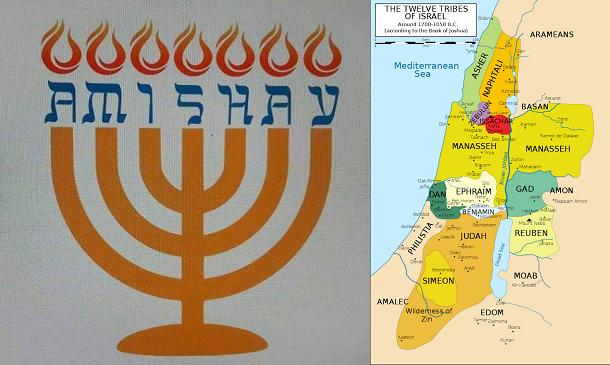
About the birthplace of Lvbuwei (呂不韋: Later called Wenxinhou 文信侯), who is said to have possibly been the real father of Qin Shi Huang (秦始皇), there are two theories. One is Yangdi (陽翟) of Han (韓) and the other is Puyang (濮陽) of Wei (衛). He is said to have been born as a child of a merchant and traveled to various places to build his fortune. Mr. Guo Moruo (郭沫若1892-1978), who is well-known as the Republic of China and the People's Republic of China's politician, novelist and historian, and Mr. Yasuhiko Satake (佐竹靖彦1939-), a scholar of Chinese history served as an emeritus professor at Tokyo Metropolitan University (東京都立大学), are considered that the First Emperor of the Han Dynasty Liubang (漢朝高祖劉邦BC256 - BC195)'s wife, Lv zhi (呂雉: BC241 - BC180) was a member of Lv buwei family.
Both the Di (氐) tribe, which built the Former Qin (前秦AD351-AD394), and the Qiang (羌) tribe. which built the Later Qin (後秦AD384-AD417) during the age of so-called the 'Period of the Five Barbarians and Sixteen Kingdoms (五胡十六国)' are Tibetan nomads. And according to the DNA research of the Israeli research agency Amishav, the tribe Qiang (羌) is the typical descendants of the tribe Manasseh. Interestingly, among the twelve tribes of Israel, only the lineages of Manasseh and Ephraim, sons of Joseph, who were sold off as a slave by his brothers and then became the Egyptian minister, are said to have
Y chromosome gene D. Y chromosome gene D-2 is characteristic of the Tibetans and the Japanese, especially the Jomon people (縄文人).
On the other hand, Mr. Shoji Fujii (藤井尚治1888-1951), who served as the editorial director of the "Nippon Shimbun (日本新聞Japan Press)," in his book "Kokushi Iron Kisetsu Shingakusetsu Ko (国史異論奇説新学説考: Consideration of different opinions, odd theories and new theories in Japanese history)," introduced a legend that Jofuku (徐福), who had gone to Japan to find the secret medicine of eternal longevity for the Emperor of Qin (秦始皇), was no less a person than Joseph, the founder of one of the Lost Ten Tribes of Israel. If that is the case, it seems to add up that Joseph's child,
Ephraim, was Emperor Jinmu (神武天皇).
Iwai Rebellion and Emperor Khinmei's coup theory
One year after Emperor Keitai moved its palace to Yamato, Baekje which had invaded by Silla, asked him to rescue. Emperor Keitai tried to send an expeditionary force to Korean Peninsula, but Iwai (磐井), a clan of Tsukushi in Kitakyushu, revolted joining hands with Silla. By suppressing this rebellion, Emperor Keitai is said to have solidified the foundation of his reign.
In addition, Nihonshoki cites the description of 'Kudara Honki (百済本記: Original Records of Baekje)' that "the Emperor and the Crown Prince and the Prince died at the same time in the year of KanotoI (辛亥)", and suggests that a coup d'etat occurred in the later years of Emperor Keitai. As a result, the following theory was born, "The Emperor Keitai and his original successors, Ankan and Senka, were murdered and Emperor Kinmei took the throne."
<To be continued>What is "Baptism with The Holy Spirit"?
According to the dialectic of the Gospel of John,
【Thesis】"A man can possess eternal life through accepting testimony of the Son of man and being baptized by him." (John 5:24)
【Anti-thesis】But "The one who comes from the earth cannot accept the testimony by one from heaven." (John 3:32)
How then can a man possess eternal life?
【Synthesis】"If you want to be baptized with the Holy Spirit, you can just go back to the word which was with God in the beginning (John 1:1) and certify that God is truthful. (John 3:33)"
When he said, "You are Huichao," Zen Master Fayan thrusted vivid Self in Huichao in front of his eyes.
Purchase here One world:AD-SEAnews
Your Comments / Unsubscribe
SEAnews Messenger
SEAnewsFacebook
SEAnews eBookstore
SEAnews world circulation

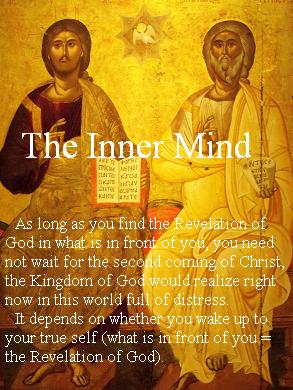

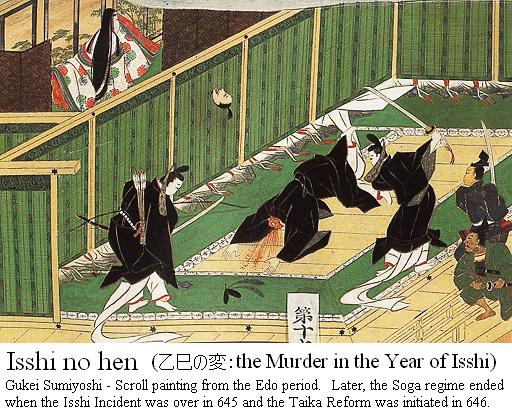
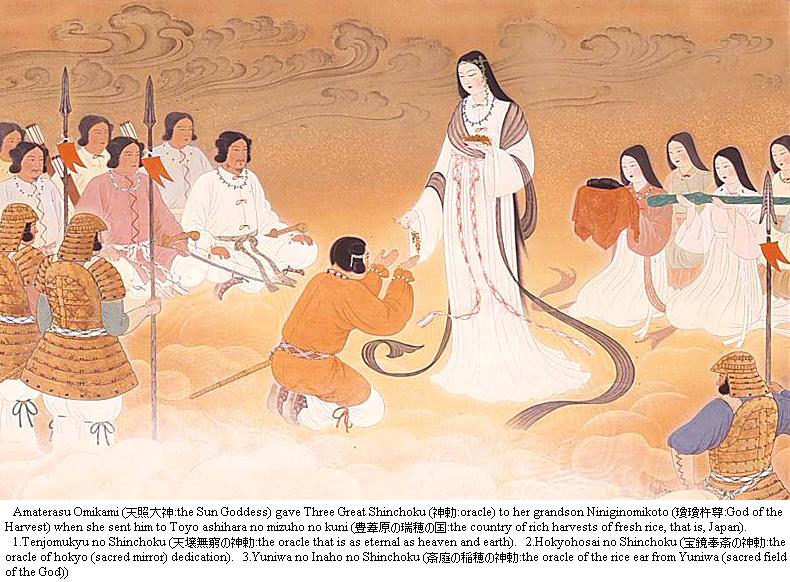
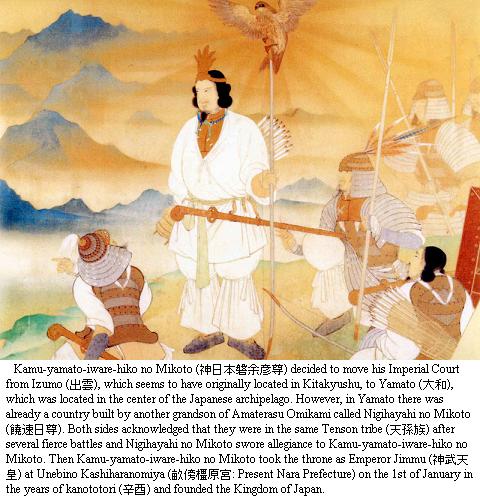
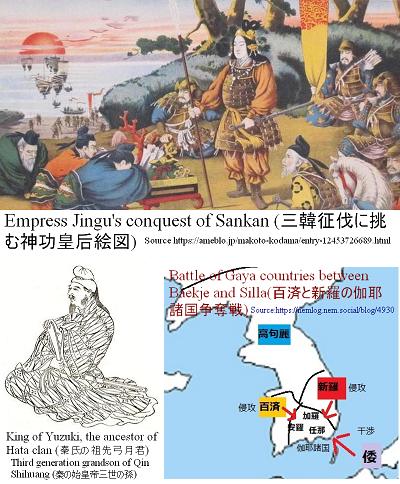
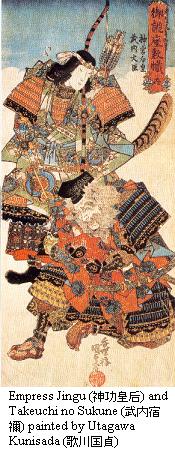
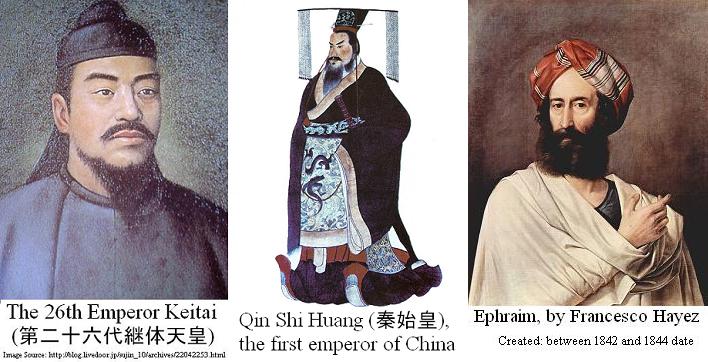
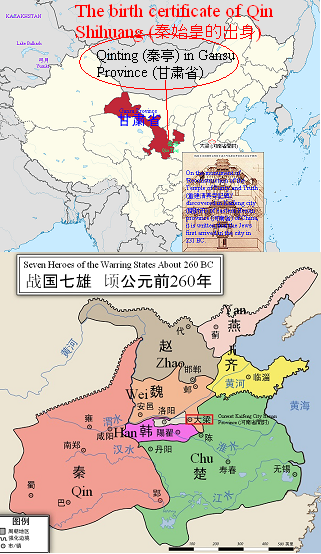

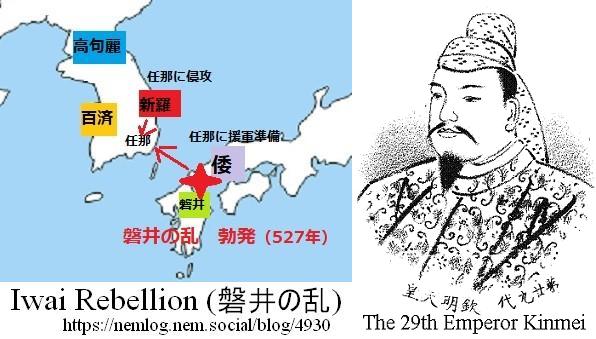
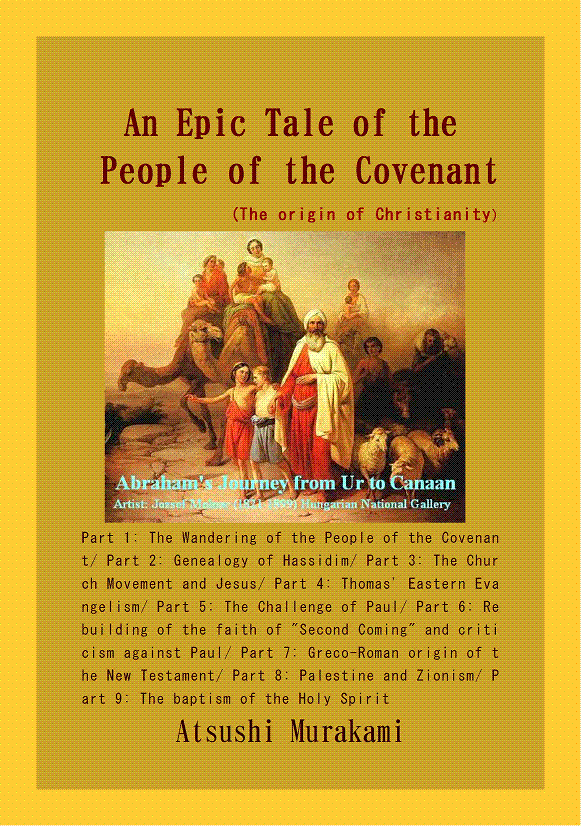

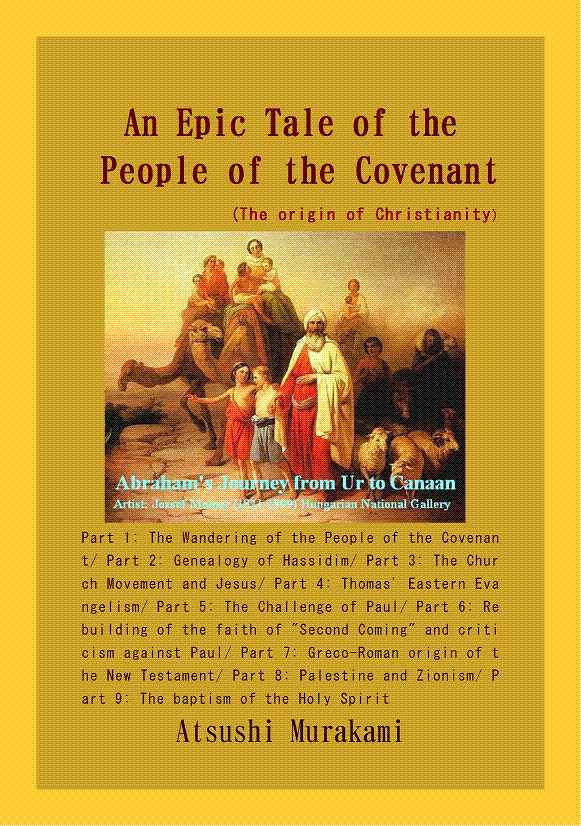
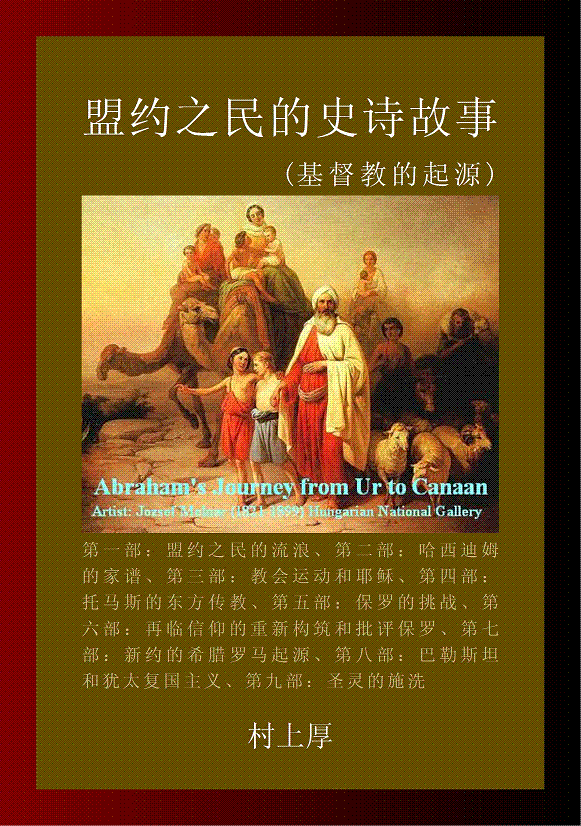
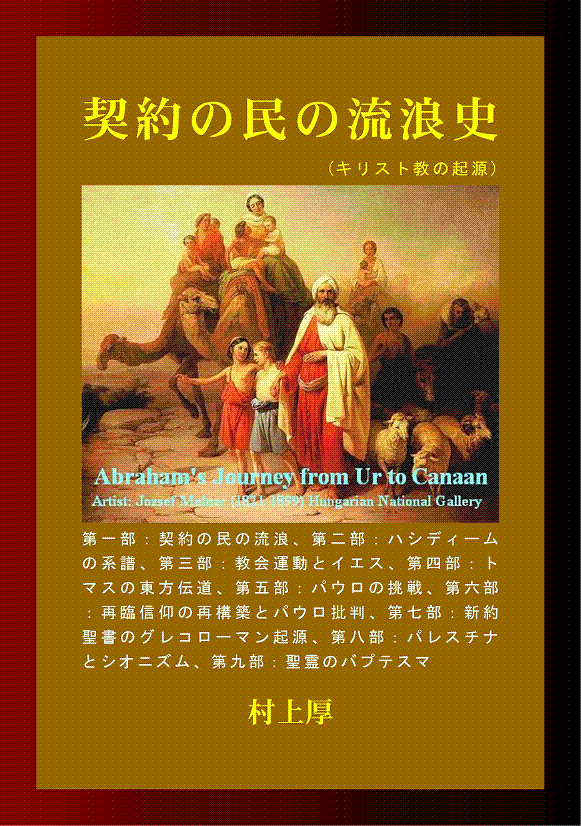



















































कोई टिप्पणी नहीं:
एक टिप्पणी भेजें
कृपया अपने बहुमूल्य टिप्पणी के माध्यम से उत्साहवर्धन एवं मार्गदर्शन करें ।
"काव्य का संसार" की ओर से अग्रिम धन्यवाद ।